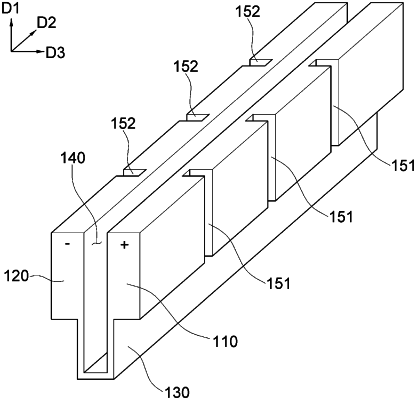| CPC H05B 3/03 (2013.01) [H05B 3/0023 (2013.01); H05B 2203/017 (2013.01); H10K 77/111 (2023.02)] | 18 Claims |

|
1. A material-removing heater device comprising:
a first terminal portion defining a first electrode;
a second terminal portion defining a second electrode;
a respective terminal portion among the first terminal portion and the second terminal portion defining a second heat dissipation groove recessed from an outer surface of the respective terminal portion and open to the outside of the material-removing heater device; and
a heating portion which connects the first terminal portion to the second terminal portion, the heating portion heatable by a flow of electrical current from the first terminal portion to the second terminal portion to remove a portion of material of a display device,
wherein
a first direction is defined from the heating portion to the respective terminal portion,
a boundary is defined between the heating portion and the respective terminal portion,
a maximum dimension of the second heat dissipation groove is defined by the respective terminal portion and extends along the first direction from the boundary,
the heating portion defines a lower end surface of the material-removing heater device at which the material-removing heater device contacts the material of the display device,
the heating portion disposes the lower end surface to have a concave shape, and
the heating portion which is heated deforms the lower end surface from the concave shape to have a planar shape.
|